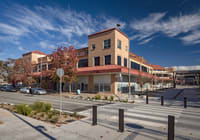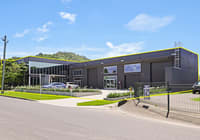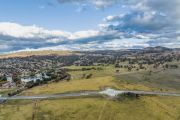
‘No data centre strategy’: Industry slams NSW’s Macquarie Park ban
Data centre operators have locked horns with the NSW government after it imposed a ban on new facilities in one of Sydney’s technology hubs to allow more housing in the area, demanding a statewide strategy for future builds or risk missing out on billions of investment dollars.
The decision to prohibit new data centres at Macquarie Park in Sydney’s northwest is the latest flashpoint as governments and regulators try to manage the sector’s runaway growth – turbocharged by the rise of AI applications – and its heavy demand on energy and water supply.

Macquarie Park is a prominent technology precinct home to facilities operated by major players including NextDC, Amazon and Macquarie Data Centres. The ban on adding further data centres was included in a raft of measures announced in November by the state government as it seeks to tackle the housing crisis.
Last week, the energy market operator requested the energy grid’s rules be changed to properly accommodate the surge in demand from data centres. AEMO warned it lacks visibility over the energy use of data centres and requires powers to help avoid cascading failures throughout the system like one that occurred in the United States earlier last year.
In the wake of the Macquarie Park decision, the Property Council, representing data centre players such as Blackstone-backed AirTrunk, Goodman and NextDC, has been lobbying the state government for months to identify alternative development zones, with limited success.
The lobby group was previously hopeful that the state government would identify areas where data centre growth was viable but has grown frustrated after months of slow progress, sources familiar with its discussions with the state government but not permitted to speak publicly said.
On Wednesday, it will issue a formal letter to Premier Chris Minns, calling for a comprehensive strategy that provides certainty on where data centres can be built to avert an investment exodus.
“The recent blanket ban on new data centres in Macquarie Park’s [rezoning] highlights the limitations of current planning approaches. Macquarie Park’s proximity to Sydney’s financial hub, key utilities and skilled workforce make it highly attractive,” Property Council NSW executive director Katie Stevenson said in the letter.
“Without a statewide strategy to identify suitable locations and address infrastructure needs, ad hoc prohibitions risk driving investment to other states or offshore.”
The Macquarie Park ban has alarmed the sector, which fears that without clarity on where new facilities can be built the flood of investment, which hit $6.7 billion last year, will dry up.
Planning Minister Paul Scully, who introduced the Macquarie Park ban as part of a number of housing reforms aimed at increasing residential density around key transport nodes such as the Macquarie Park metro station, rejected accusations that the NSW government was not supporting the data centre sector.
Scully said the planning department was currently reviewing 24 data centre applications.
“Sydney has the most operational co-location data centres in Australia and with Singapore, Beijing, Shanghai, and Tokyo, is amongst the largest and most important data centre clusters in the Asia Pacific,” Planning Minister Paul Scully said.
But the property Council’s Stevenson told the Australian Financial Review that a coordinated strategy was needed to both fix the housing crisis and manage the load on energy grids.
“We need a grid capable of supporting the growth needs of our cities into the future, and this includes data centres. We know that data centres have significant power needs, which is why we need to get ahead of the challenge. A coordinated strategy is the first step,” Stevenson said.











